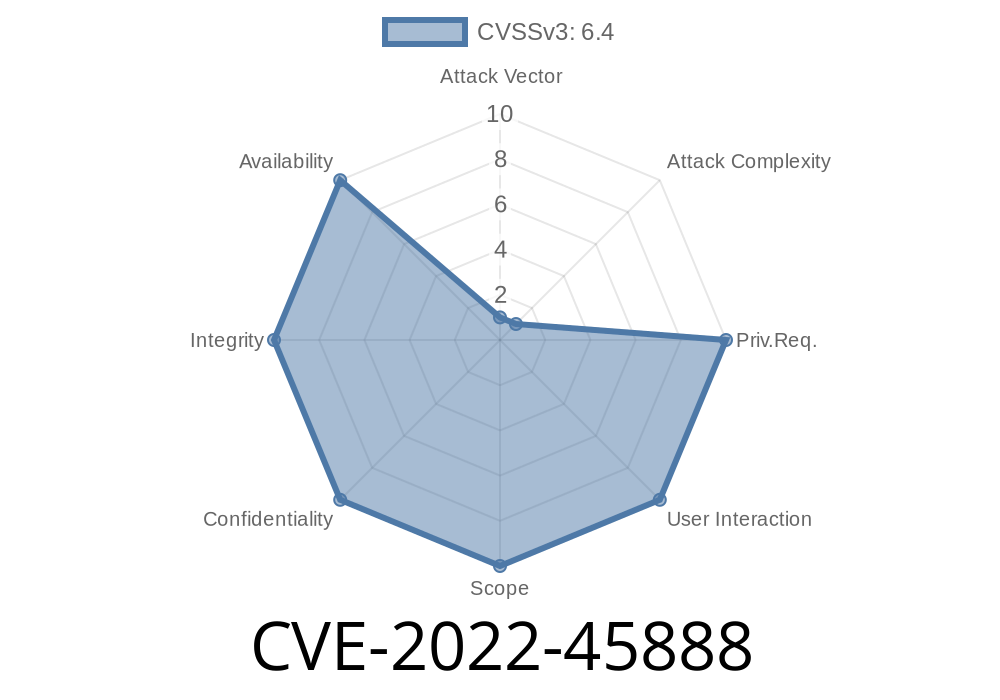Published: June 2024
Vulnerable Component: Linux Kernel (through 6..9), drivers/char/xillybus/xillyusb.c
Severity: High
Impact: Potential elevation of privileges, crashes, or arbitrary code execution
Introduction
The Linux kernel is at the heart of practically every major server and embedded system. So, when a vulnerability pops up affecting usb drivers—especially lesser-known ones like xillyusb—it’s worth a closer look.
CVE-2022-45888 exposes a race condition and a use-after-free flaw triggered by physical removal of a USB device using the xillyusb driver. We'll look at the bug, how it happens, its consequences, and what you should do.
Understanding the Vulnerability
The xillyusb driver allows for fast USB device communication in data streaming applications. However, between kernel versions up to and including 6..9, a dangerous bug slipped in.
High-level Problem
When a usb device using xillyusb is physically disconnected, there’s a window where pointers to memory associated with the device may be used after that memory is freed. This happens because the kernel can schedule operations in the driver after the removal logic begins—but before it finishes cleaning up resources.
In programming terms, this is called a race condition leading to use-after-free.
Let’s See It In Code
Here’s a simplified and annotated version of the problematic area (not verbatim, for educational clarity):
// xillyusb.c (simplified):
static void xillyusb_disconnect(struct usb_interface *interface)
{
struct xillyusb_dev *dev = usb_get_intfdata(interface);
// ... perform some cleanup ...
usb_set_intfdata(interface, NULL);
// Free memory associated with the device
kfree(dev);
// Oops! Other kernel threads may still reference 'dev' here
}
The problem:
After kfree(dev) is called, some workqueue or ongoing kernel operation might still access dev. If that happens, you get undefined behavior—commonly a crash, sometimes exploitable memory corruption.
Check the official patch commit that highlights this issue.
What Can Attackers Do?
- Local crash: Malicious user can trigger a kernel crash (DoS) by rapidly connecting/disconnecting devices or crafting special requests.
- Privilege escalation: With precise timing/manipulation, a skilled attacker can sometimes overwrite freed data and execute arbitrary code within kernel space.
Exploiting use-after-free issues requires careful timing but is a well-known primitive in kernel attacks.
Exploit Example (Educational Only)
Suppose an attacker has user-level code that can flood the driver with requests between connection/disconnection cycles:
// Pseudo-exploit: flooding IOCTLs
while (1) {
int fd = open("/dev/xillyusb", O_RDWR);
if (fd >= ) {
ioctl(fd, XILLYBUS_MAGIC_IOCTL, &some_data);
close(fd);
}
// Now physically disconnect device here (with a script or by hand)
}
By carefully timing disconnects and operations, this might hit the window where the driver uses freed memory.
References and Mitigation
- Official CVE Description: NIST CVE-2022-45888
- Linux Kernel Patch: Changelog 6..10 (kernel.org)
- xillybus source code: Kernel source
How To Fix
Upgrade your kernel to at least 6..10 or apply vendor patches if running enterprise distributions.
Patch summary (what's fixed)
- Making sure all kernel paths using the dev pointer are synchronized/finished before freeing it
Conclusion
CVE-2022-45888 is a typical example of why race conditions and memory management in kernel code remain hard and important. Physical device removal seems harmless—but can open the gates to serious bugs. If you're on Linux with xillyusb-enabled devices, patch now.
Timeline
Published on: 11/25/2022 04:15:00 UTC
Last modified on: 01/20/2023 20:20:00 UTC
